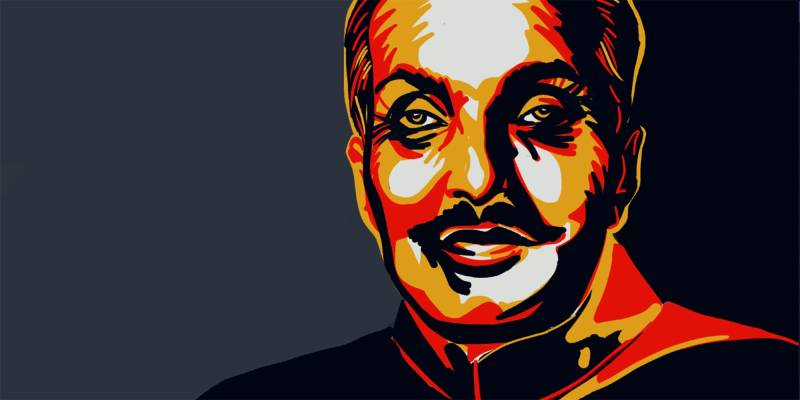
By Nadeem Farooq Paracha
41 years ago, on July 5 1977, General Ziaul Haq toppled the government of ZA Bhutto to impose the country’s third martial law. The military regime that he imposed lasted till his demise in a controversial plane crash in August 1988. Even though there were two military coups before 1977 (1958; 1969) and one after (in 1999), most historians and political scientists agree that the 11-year-long dictatorship launched by Zia’s coup remains to be perhaps the most repressive and reactionary regime experienced by the country – one that eventually turned Pakistan’s social and political destiny on its head.
[divide]
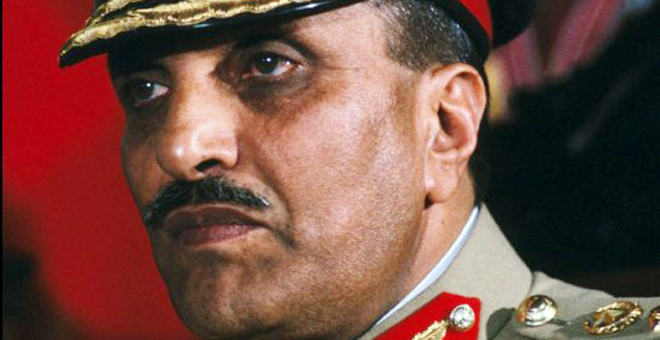
Some two weeks after his first ‘address to the nation’ (on TV and radio) General Zia held a press conference in Islamabad. To a question about his government’s plans to introduce a new censor policy for TV, radio and film, the general smiled and responded: Mujay pata hai ab kuch log TV keyoun nahi daikh rahey. Chiryaan jo ur gaien hein (I know why some people are not watching TV anymore. [That’s because] now all the birds have flown away). By ‘birds’ he most probably meant women in ‘obscene’ clothes and roles.
When he was announcing the imposition of Pakistan’s third martial law during his first address, there was the obligatory portrait of Muhammad Ali Jinnah in the backdrop and a Pakistani flag on the desk in front of him. But Zia also insisted that a calligraphic name of ‘Allah’ be framed and put up. All this was a far cry from how Ayub Khan (1958-69) and ZA Bhutto (1971-77) had done things in this context.
Ayub Khan, during one of his early addresses (on radio) had maintained that Pakistan was not created to indorse a theocracy or a ‘priest-ridden society’. He had also changed the country’s name from Islamic Republic of Pakistan to simply Republic of Pakistan. And during his speeches on TV only the Pakistani flag and Jinnah’s portrait could be seen.
Bhutto’s televised addresses continued the practice but added the playing of the Pakistani national anthem just before the address. But Zia kept adding more elements to his televised addresses. He retained the small Pakistani flag on the table at which he sat speaking, and Jinnah’s portrait. And as already mentioned, he also added the putting up of Allah’s name in a frame beside Jinnah’s portrait. He also continued the ritual of the anthem being played before the address. Then he added two more elements. Just before the anthem, a cleric would orate some verses from the holy book which was followed by a reciter delivering a short naat.
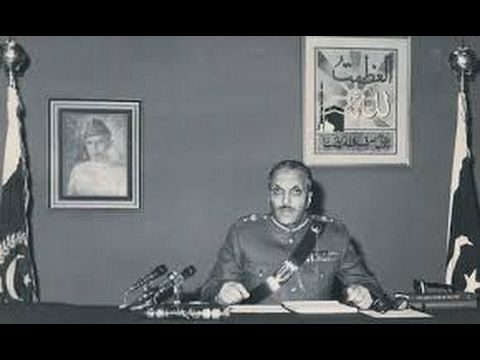
These were simply just a few reactive to-dos, thought up by the new information ministry which was now being run by the Jamat-i-Islami (JI). JI was one of the only political parties that had decided to join the martial law regime. Grabbing state power (to impose Sariah laws) was an essential component of JI chief and Islamic scholar, Abul Ala Maududi’s political philosophy.
In Zia the party saw a possible vessel to carry forward Abul Ala Maududi’s idea of evolving an Islamic state. But on Zia’s part, these were largely shenanigans because even though right at the beginning of his regime he did introduce laws such as the public flogging of ‘criminals’ - who, however, were mostly anti-martial-law students, journalists and activists - for two years he did not introduce any significant ‘Islamic laws’, as such.
Many years after Zia’s take-over, one of the officers, Lt. Gen. Faiz Ali Chisti, who had helped Zia engineer the coup, wrote that Zia was petrified by Bhutto. Chisti informs that Zia was hand-picked by PM Bhutto to become the army chief in 1976 despite the fact that his name was not on the list of possible candidates for the job. The list was prepared by the outgoing military chief, General Tikka Khan. According to Chisti, Zia was a clever sycophant and knew well how to appeal to Bhutto’s ego. Also, Zia had presented himself to be a loyal, and, more importantly, a completely non-political military man. This had convinced Bhutto to give him a promotion and the military’s top post.
Chisti claimed that it was a few fellow officers and him who convinced Zia to plan a coup because the situation between the anti-Bhutto parties and the Bhutto regime had reached a dangerous stalemate. After finally agreeing with the plotters, Zia immediately sent his wife and children abroad, telling Chisti, ‘murshid, marwa na dena’ (don’t get me killed). Even after Bhutto was toppled and then put in ‘protective custody’ (in the beautiful hill station, Murree) Zia was extremely polite and courteous towards his prisoner.
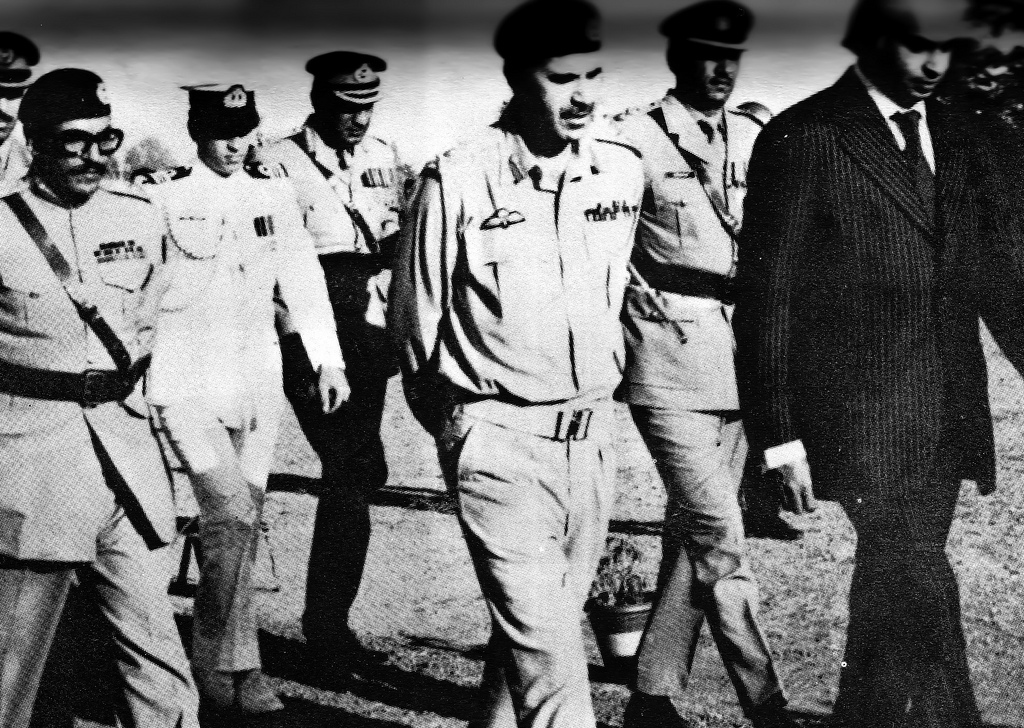
He promised Bhutto that he would hold fresh elections after the instability caused by the March-April anti-Bhutto movement had subsided. But Zia kept postponing the promised election. One of the reasons was that when Bhutto was released (so he could campaign for the promised election) he began to draw huge crowds at his rallies. In one such rally in Lahore he announced that those who had toppled his government had committed an act of treason. He then added that the punishment for committing treason was death.
Chisti wrote that this rattled Zia. Advised by the prominent anti-Bhutto lawyer, AK Brohi, and another anti-Bhutto law expert, Sharifuddin Pirzada, Zia allowed the courts to re-open a 1974 case registered against Bhutto by dissident PPP man, Ahmad Raza Kasuri. Kasuri had accused Bhutto of getting his father assassinated in Karachi in 1974. Bhutto was arrested again immediately after the Lahore rally and the forgotten case was reopened.
Zia handed over the case to the chief justice of the Lahore High Court, Maulvi Mushtaq Hussain, who was a well-known critic of the former PM. After failing to discover any real evidence that could link Bhutto to the murder, Zia’s agencies forcibly wheedled the former head of Bhutto’s paramilitary outfit, the Federal Security Force (FSF) to testify against his former boss. It was a shabby case but it somehow convinced Zia that this was the only way he could get rid of a man he was sure had the ability to bounce back and pounce on him. O L. Sirrs in his 2016 book on the history of the ISI wrote that as it became clear that the cards were entirely stacked against the shocked former PM, and the verdict would go against him, Zia asked the ISI to conduct a survey to determine what would be the peoples’ reaction if Bhutto was to be executed. The agency advised him not to execute Bhutto. But it was quite apparent that under no circumstance could Zia allow Bhutto to live. He was certain that even if he exiled the former PM, Bhutto would return to power and get him (Zia) hanged.
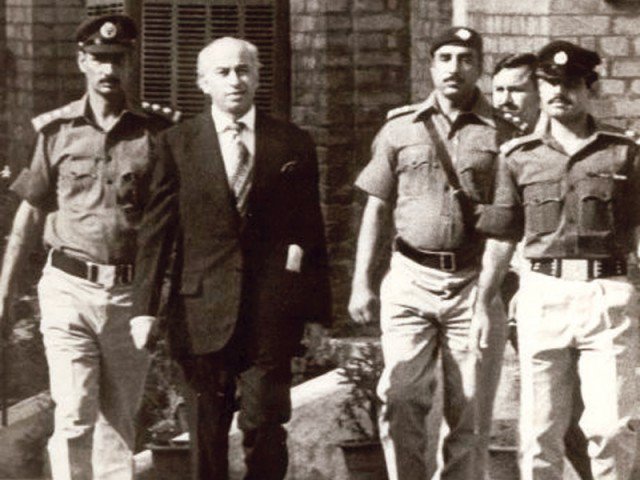
It wasn’t until late 1978 that Zia decided to stay on and get rid of Bhutto for good. He gathered the confidence to begin unfolding the laws he had been talking about, which, as he put it, ‘would finally make Pakistan what it was really meant to be: a true Islamic state.’
Even though hundreds of students, intellectuals and political workers had dared to challenge the harsh martial law decrees against exhibiting dissent in public, there were many Pakistanis – especially those who had had enough of Bhutto’s ‘democratic authoritarianism’ and had protested on the streets during the anti-Bhutto movement – who welcomed the idea of an Islami nizam (Islamic system). One is not quite sure exactly how people had perceived what such a nizam but there is every likelihood that to many it meant a system like the one practiced in Saudi Arabia. The Islamic parties had encapsulated Maududi’s Islamic Utopia into the slogan, Nizam-e-Mustafa. Their leaders promised that such a system would herald an economic and social revolution in Pakistan, eliminating crime, inequality, and immorality.
But these parities’ manifestos had said very little about what kind of laws would trigger and then govern such a nizam. In fact each religious party adhered to different interpretations of the Sharia. A former PPP minister and scholar, Kausar Niazi, had once pointed out to Bhutto (in 1974) that the members of one Islamic party often refuse to allow members of other Islamic parties to lead the Muslim prayer and that they frequently considered each other to be heretics.
In his detailed study of the 1977 anti-Bhutto movement, scholar and academic Khalid bin Sayeed in his 1980 book, Nature and Direction of Change, wrote that the opposition’s call for Nizam-e-Mustafa had been enthusiastically received by those segments of the society who had been negatively impacted by the Bhutto regime’s economic policies. These included the urban middle and lower-middle classes, the trader class, the ulema and the industrialists. Sayeed’s analysis suggest that there was only nominal presence (in the movement) of the urban working-classes and of the peasants and small-scale farmers in the rural areas.
Finally, in February 1979, the dictatorship ceremoniously rolled out its first major stack of ‘Islamic laws.’ On the 10th of February a lengthy ‘Hudood Ordinance’ was issued which was drafted by a 12-member Council of Islamic Ideology made up of Islamic scholars and jurists who were all hand-picked by Zia.
The Hudood Ordinance was a set of laws which defined punishments for the crimes of drinking alcohol, gazf (false witness), zina (adultery), and theft. A system of ‘Islamic courts’ (the Sharia Bench) was also introduced ‘to test whether laws existing before the Ordinance were offensive to Islam.’ One of the first cases to be heard by these courts was filed by a retired Supreme Court judge who claimed that the whole idea of parliamentary democracy was ‘un-Islamic’ and should be done away with. The retired judge argued that what is permitted under Islamic law is an amir (ruler) and a shura, an assembly of dignitaries that is not representative in the Western sense. He claimed that it is not necessary to ascertain the consent of the general public about the amir.
Not surprisingly these words were music to General Zia’s ears who maintained that the country was in need of a ‘new political system.’ In October 1979 he formed a committee of jurists and ulema to formulate recommendations about the structure of an Islamic government. Pakistan, he stressed, ‘was created in the name of Islam and in Islam there was no provision for Western-type elections.’ Zia added that the Ordinance was just the beginning and a lot more had to be done to turn Pakistan into a truly Islamic state.
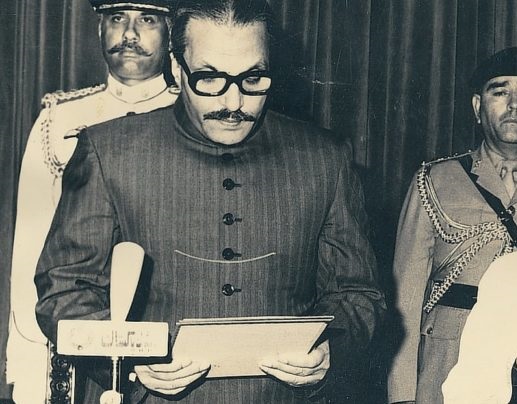
The Islamization drive picked up more steam when in 1980 the Zia dictatorship - which was being termed as ‘barbarous’ by many western observers - suddenly became a vital component of the United States’ rapidly evolving strategy to counter Soviet forces that had occupied Afghanistan.
Zia willingly agreed to allow various anti-Soviet Afghan insurgents to set up shop in towns and cities near the Pak-Afghan border in return for a windfall of military and financial aid from the US and Saudi Arabia. Bhutto was hanged in April 1979.
The continuing aid worth billions of dollars from the US and Saudi Arabia also went a long way in generating an economic boom. The boom was welcomed by the middle and lower middle classes and the business community. But with this boom also came a rise in sectarian violence as radical religious elements who were once relegated to the fringes of society were now provided with funds and seminaries to prepare young men for a (US-funded) ‘jihad’ in Afghanistan.
The 1979 Islamic revolution in Iran on the other hand radicalized Pakistani Shia youth. This perturbed Zia and his Sunni-Muslim allies. Such tensions often exploded in the shape of deadly clashes between state-backed Sunni militant outfits and Iran-backed Shia radical groups. Apart from this, ethnic violence, especially in the province of Sindh too grew manifold when hordes of Afghan refugees (some carrying heroin and weapons for sale) began settling in Sindh’s metropolitan capital, Karachi. The city’s resources came under great stress, often leading to violent clashes between Karachi’s Mohajir majority and the in-coming Afghans.
As cops, armed with the Hudood Laws, spent much of their time blackmailing, chasing and arresting drunks, young couples, and, of course, political dissenters, heroin addiction grew unchecked, jails began filling up with women thrown there due to the complexities of the laws against zina, and corruption within government and state institutions spread because everyone wanted a piece of the pie which was being served to Pakistan by the US and Saudi Arabia for fighting the good fight in Afghanistan.
But Zia’s ‘Islamization’ juggernaut continued to move forward. Committed to entirely change the political, religious and social landscape of the country, more laws in the name of Islam were announced which eventually became part of the constitution after Zia got himself elected through a sham referendum and then held a ‘party-less election’ in 1985.
The election populated the national assembly with members of a party that he had engineered. It was actually the re-engineering of the Pakistan Muslim League. Pakistan’s founding party had been a staunch advocate of ‘Muslim democracy’ and Muslim Modernism but had shattered into pieces in the 1950s, before being reconstituted as Convention Muslim League by Ayub Khan. The League was left scattered again after Ayub’s fall till Zia managed to get all the factions together to form another holistic Muslim League. But this was an altogether different party. Because even though it kept portraying Jinnah and Iqbal on its posters, this party had become a ‘parliamentary’ vessel for Zia’s Islamization drive.
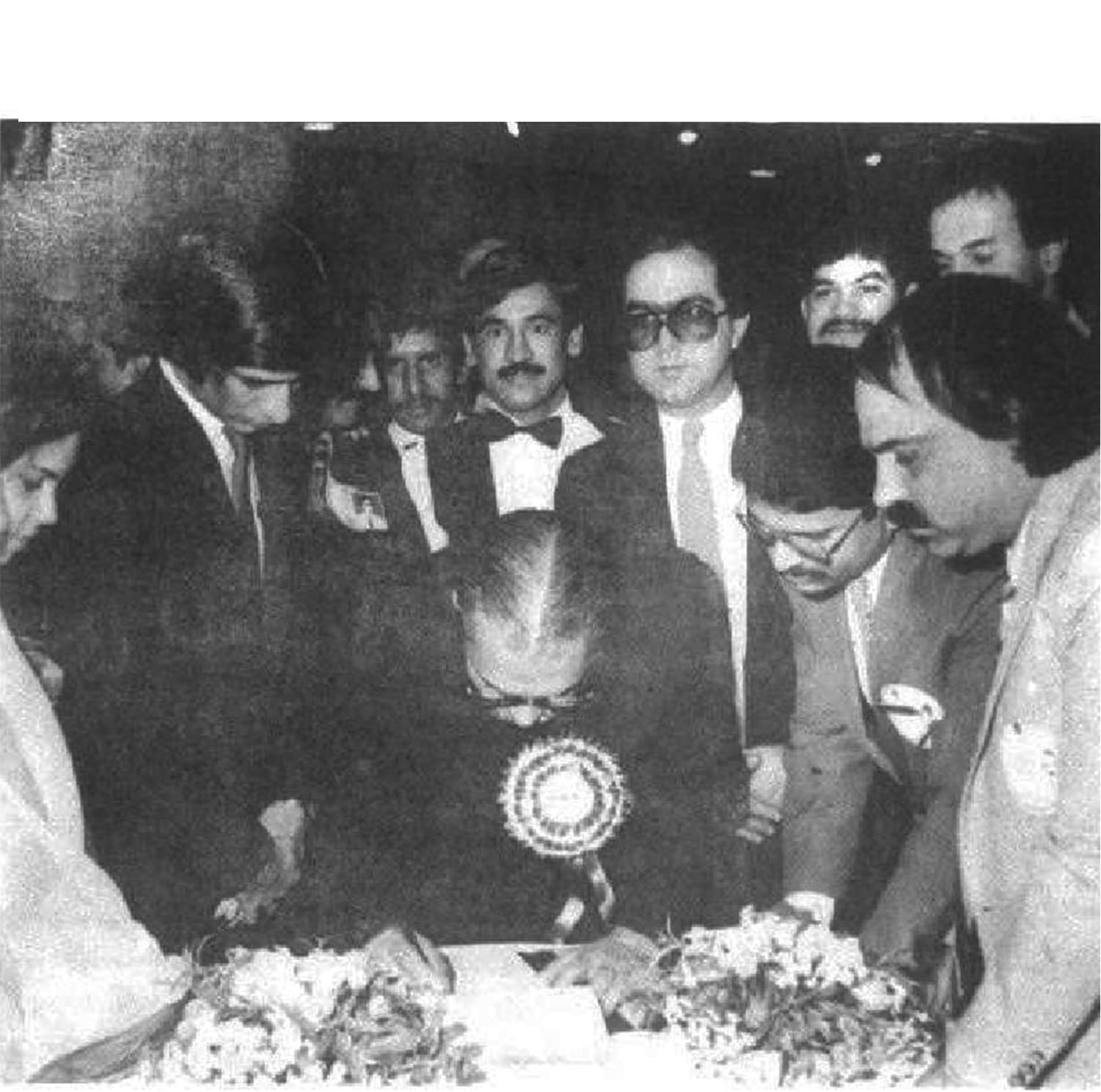
Zia's on-going Islamization program contemplated modifications in Pakistan's economic system through the establishment of so-called ‘Islamic banks;’ the abolition of bank interest (riba); the mandatory collection of zakat (social welfare tax) against bank holdings; the establishment of a profit-loss sharing scheme in banks; introduction of an Islamic land tax (ushr), and the establishment of institutions to study ‘Islamic economics.’ His program also mandated educational reforms by establishing new institutions (such as the International Islamic University, Sariah Training Institute, and various ulema-training institutes).
The importance of having Arabic in the curricula was enhanced, and a process of the wholesale redrafting of textbooks to incorporate an Islamic approach to pedagogy was begun. Social reforms were also introduced through stressing the sanctity of the Muslim holy month of Ramazan and the encouragement of chadar (modest dress by Muslim women).
All these were introduced on the pretext that Pakistan had been suffering due to laws that were enacted by the British and that its rulers (before Zia) had not given the people the Islamic state that they had expected. This notion was hammered in through text books and the state-owned media.
What’s more, faced with the dilemma of having a founder of the country (Jinnah) who was quite clearly a modernist and an admirer of the secular Turkish nationalist, Kamal Ataturk, the Zia regime went into overdrive in its attempt to reimagine and then present Jinnah as an Islamic sage who had shunned his western ways after being re-introduced to his faith by the likes of Muhammad Iqbal.

The constant exhibition of piety and a commitment to establish a ‘truly Islamic state’ when coupled with economic growth and the rekindling of the idea of a country having a powerful army, played well to the many middle and lower-middle-class segments.
But Zia also had numerous detractors from the same classes. His greatest opponents, apart from, of course, Bhutto’s PPP, were some animated women’s rights organizations such as the Women’s Action Forum (WAF) whose activists unabashedly protested against him in the streets, sometimes burning their dupattas (scarfs) after claiming that Zia’s laws were ‘anti-women.’
Even though those protesting against Zia’s program and laws, especially organizations such as WAF, often managed to embarrass the regime by getting their point of view published in some western newspapers, most human and civil rights activists and political workers went unheard even in the most liberal and democratic European countries.
This was due to the fact that much of the efforts of the media in these countries and of their governments were focused on the civil war in Afghanistan. The United States and its allies in NATO largely looked the other way when the Zia regime was using religion to commit open human rights violations and intense political repression.
The most the west was willing to offer at the time was political asylum to those thrown out or volunteering to move out of Pakistan due to the repressive atmosphere there. For the US and its European allies, Zia was too important an asset to upset in their Cold War against ‘Soviet expansionism.’
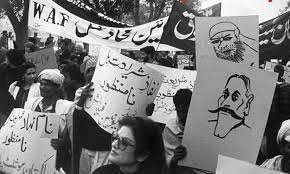

Consequently, Zia would often explain a criticism of his dictatorship as a criticism against Islam. Some observers believe that he enacted certain laws just so these laws could be used to dissuade people from publicly criticizing his regime or else face the legal consequences of deriding Islam.
One of these laws was the culmination of a series laws now called the Blasphemy Laws. Interestingly, these laws have their roots in a law first imposed by the British in India in 1927. The British made it a criminal offense to commit deliberate and malicious acts intended to outrage religious feelings of any class by insulting its religious belief.
This law which did not discriminate between religions, was adopted by Pakistan as is after the country’s creation in 1947. It only rarely came into play until it was reviewed in the early 1980s by the Zia regime and a clause was added to it which advised life imprisonment for anyone caught ‘desecrating the holy Qur’an.’ Then in 1986, another clause suggesting the death sentence for the offenders was added to the laws.
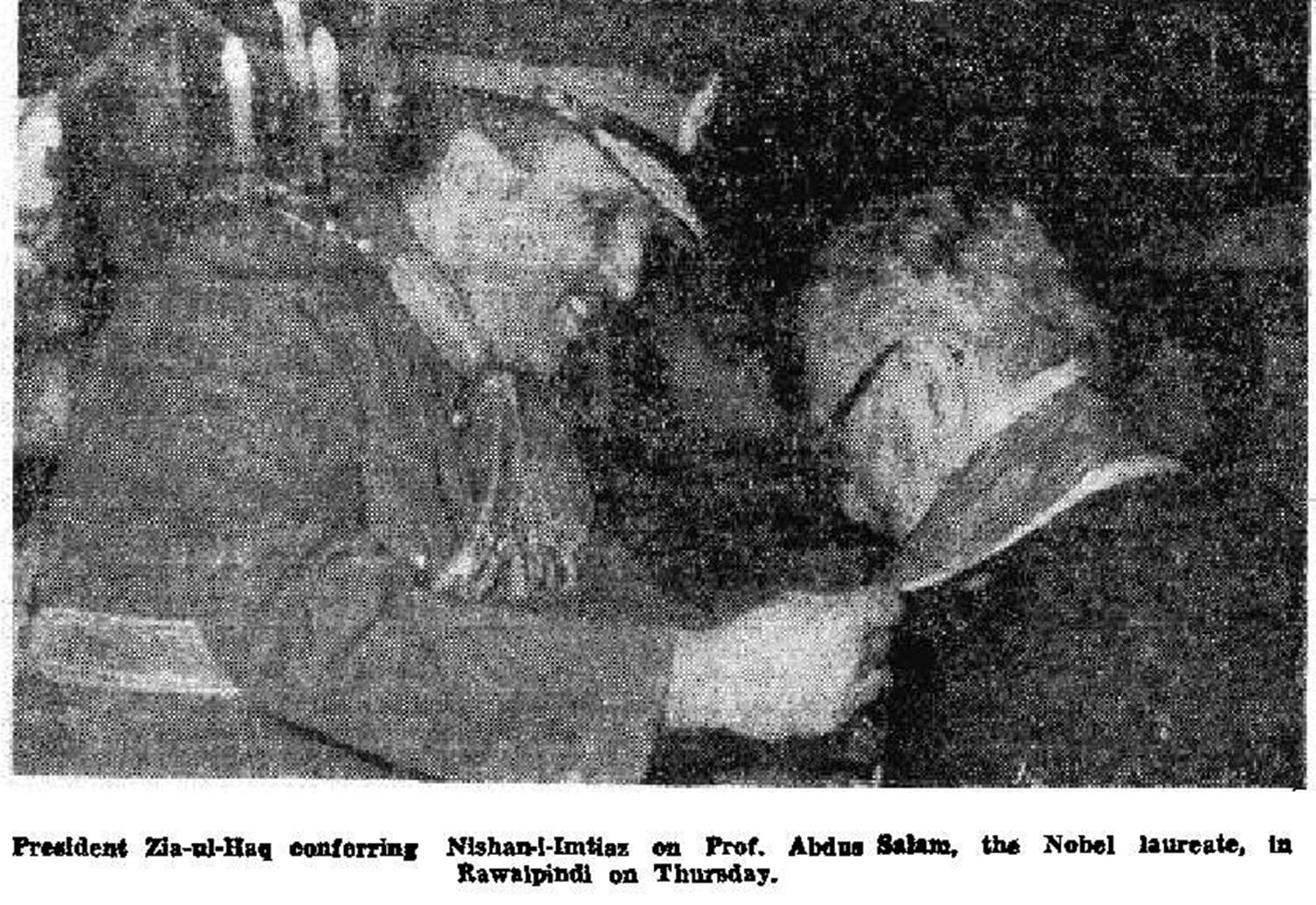
Zia’s so-called ‘Islamic’ endeavors began in the mid-1970s when he was a Lieutenant-General. PM Bhutto thought it to be a good idea to kindle an interest in faith and daily Islamic rituals in the officers because he believed this would corrode the Bonapartist tendencies that he feared they had developed during the Ayub Khan regime.
Zia was more than happy when then military chief, General Tikka Khan, prohibited the serving of alcoholic drinks in the army mess halls. Bhutto did not even mind much when Zia began handing out books written by Islamic scholar, Abul Ala Maududi, to the officers, despite the fact that Maududi was fiercely opposed to the Bhutto regime. After coming into power in 1977, it took another two years for Zia to unfold his Islamization program. But he had continued to Islamize the armed forces which he believed would be vital to ensure his program is carried out without much interference from other state institutions.
Military officers were encouraged to grow beards ( even though Zia himself never grew one); hoardings and signboards with inscriptions from Islam’s sacred texts were put up around the cantonments; evaluation of the officers now also included a comment by their superiors on the officers’ religious sincerity; and Islamic evangelical organizations were given a free hand to preach to the soldiers.
Once Zia’s Islamization program was well underway in the military, he began to introduce it in other state and government institutions, and, finally, in the society.
The ulema had found the whole idea of Muslim Modernism of the founders of Pakistan to be inherently anti-ulema. Zia too found it to be too disparaging of men of faith. He accused it of being the reason why Pakistan had lost its Eastern wing in 1971. To him the ‘secular nature’ of the country’s armed forces and of other state institutions had failed to impose a more robust form of Islam and consequently allowed nationalism based on the South Asian Muslim nationalist ethos to shrink the country’s grander raison d'etre.
The grander nationalism advocated by Zia gave full expression to the once relegated theocratic idea of Muslim nationalism. To him the Pakistan ideology was synonymous to ‘Islamic ideology’ because Pakistan was no more just a Muslim refuge in South Asia, but an Islamic outpost which was to defend Islam globally.
Zia was killed in a plane crash on 18th August 1988. Many observers believe it to be an act of sabotage. Names of various possible perpetrators were thrown around: The Soviet KGB; the Afghan intelligence agency, KHAD; and the left-wing Pakistani urban guerrilla outfit the Al-Zulfikar. Even the CIA was mentioned because according to those who believe that the plane was brought down by the American intelligence agency, Zia had become a liability to the US with his increasingly repressive dictatorship, his refusal to roll back the ‘jihad’ in Afghanistan after the Soviet forces had agreed to move out, and due to ‘his regime’s involvement with anti-Soviet Afghan insurgent groups who were involved in the processing and smuggling of heroin to the US.
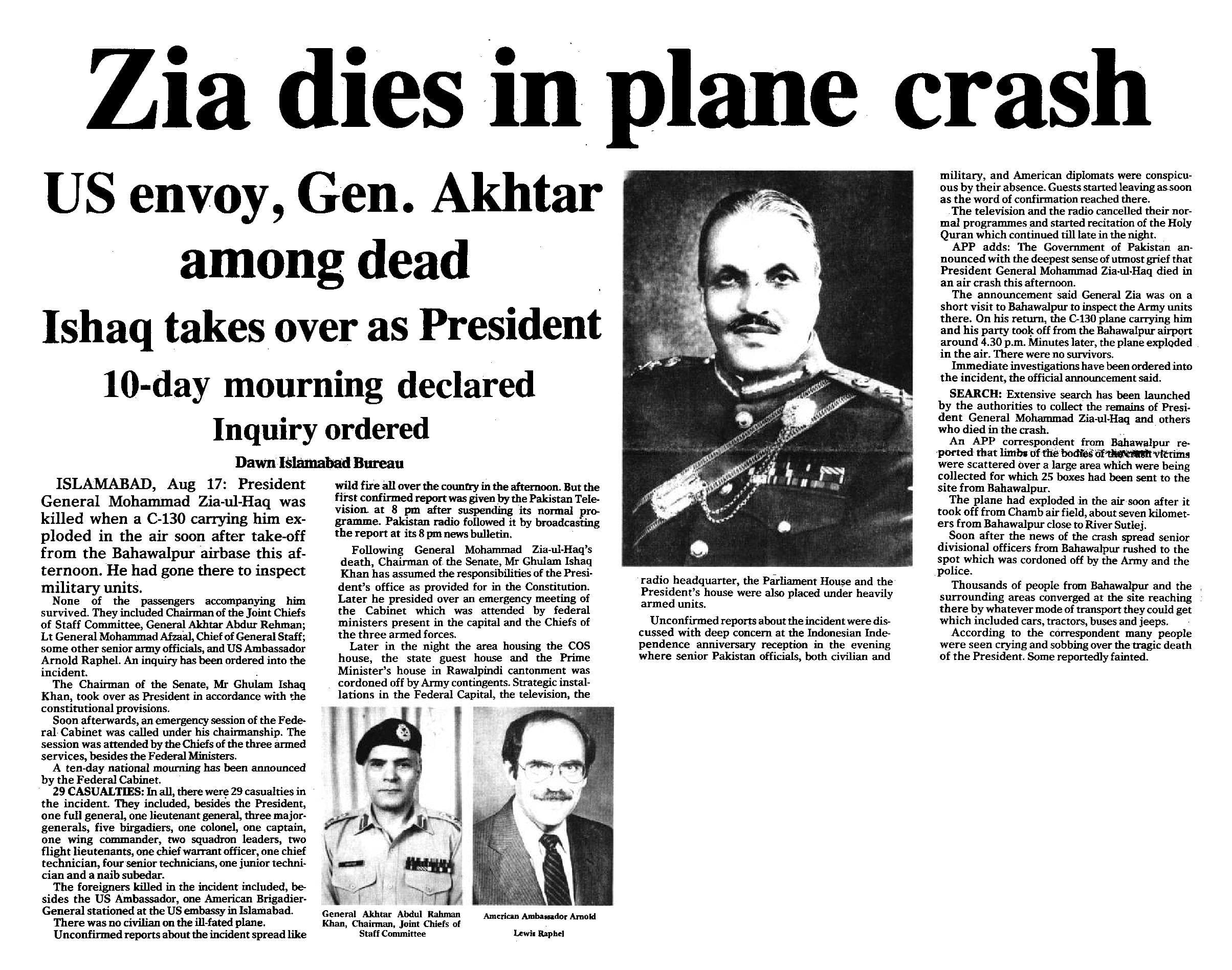
Zia’s Islamization process was a failure because it did not achieve in making Pakistan the strong bastion of Islam that it had set out to. Islam was not refreshed as a faith ready to adapt to the changing ways of the world. Instead, it was turned into a cynical weapon to quash political dissent; bolster militant Islamic groups (so that the ‘jihad’ in Afghanistan continued to be fed with freshly indoctrinated fighters ensuring hefty US and Saudi aid); and to solidify a repressive regime.
The economy had boomed in the early 1980s due to Saudi and US aid; the roll-back of Bhutto’s ‘socialist’ policies; and a windfall of remittances from Pakistanis working in Saudi Arabia and the UAE. But narcotic trade also gathered momentum.
By the late 1980s Pakistan had become the world’s second largest supplier of heroin. In the end, it was only about a dictator holding on to power and for which he did not hesitate to continue issuing ordinances and laws based on his own understanding of the Sharia. The consequences of these laws in a country with deep ethnic, sectarian, sub-sectarian and class divides seems to have not been debated or discussed in a more rational manner by the regime which, on an ideological level, was convinced that all Pakistanis would happily accept them, and, on a political level, these laws would strengthen the hold of a dictatorship which continued to propagate itself as a sincere harbinger of prosperity and power through the imposition of a true Islami nizam.
In reality, what it left behind in 1988 was a country wrecked by escalating Sunni-Shia strife; growth of militant sectarian and ‘Islamist’ outfits whose leaders were brought into the mainstream to preach and practice armed jihad; a rise in hate crimes against minority sects and other religions; an onslaught on women’s rights; and a generation of young Pakistanis ravaged by drug addiction, gun violence and embroiled in deadly ethnic and sectarian conflicts.
[divide]
Cover image illustration by: Maria Huma
Cover image courtesy: Dawn
41 years ago, on July 5 1977, General Ziaul Haq toppled the government of ZA Bhutto to impose the country’s third martial law. The military regime that he imposed lasted till his demise in a controversial plane crash in August 1988. Even though there were two military coups before 1977 (1958; 1969) and one after (in 1999), most historians and political scientists agree that the 11-year-long dictatorship launched by Zia’s coup remains to be perhaps the most repressive and reactionary regime experienced by the country – one that eventually turned Pakistan’s social and political destiny on its head.
[divide]

Some two weeks after his first ‘address to the nation’ (on TV and radio) General Zia held a press conference in Islamabad. To a question about his government’s plans to introduce a new censor policy for TV, radio and film, the general smiled and responded: Mujay pata hai ab kuch log TV keyoun nahi daikh rahey. Chiryaan jo ur gaien hein (I know why some people are not watching TV anymore. [That’s because] now all the birds have flown away). By ‘birds’ he most probably meant women in ‘obscene’ clothes and roles.
When he was announcing the imposition of Pakistan’s third martial law during his first address, there was the obligatory portrait of Muhammad Ali Jinnah in the backdrop and a Pakistani flag on the desk in front of him. But Zia also insisted that a calligraphic name of ‘Allah’ be framed and put up. All this was a far cry from how Ayub Khan (1958-69) and ZA Bhutto (1971-77) had done things in this context.
Ayub Khan, during one of his early addresses (on radio) had maintained that Pakistan was not created to indorse a theocracy or a ‘priest-ridden society’. He had also changed the country’s name from Islamic Republic of Pakistan to simply Republic of Pakistan. And during his speeches on TV only the Pakistani flag and Jinnah’s portrait could be seen.
Bhutto’s televised addresses continued the practice but added the playing of the Pakistani national anthem just before the address. But Zia kept adding more elements to his televised addresses. He retained the small Pakistani flag on the table at which he sat speaking, and Jinnah’s portrait. And as already mentioned, he also added the putting up of Allah’s name in a frame beside Jinnah’s portrait. He also continued the ritual of the anthem being played before the address. Then he added two more elements. Just before the anthem, a cleric would orate some verses from the holy book which was followed by a reciter delivering a short naat.

Announcing martial law on TV.
These were simply just a few reactive to-dos, thought up by the new information ministry which was now being run by the Jamat-i-Islami (JI). JI was one of the only political parties that had decided to join the martial law regime. Grabbing state power (to impose Sariah laws) was an essential component of JI chief and Islamic scholar, Abul Ala Maududi’s political philosophy.
In Zia the party saw a possible vessel to carry forward Abul Ala Maududi’s idea of evolving an Islamic state. But on Zia’s part, these were largely shenanigans because even though right at the beginning of his regime he did introduce laws such as the public flogging of ‘criminals’ - who, however, were mostly anti-martial-law students, journalists and activists - for two years he did not introduce any significant ‘Islamic laws’, as such.
Many years after Zia’s take-over, one of the officers, Lt. Gen. Faiz Ali Chisti, who had helped Zia engineer the coup, wrote that Zia was petrified by Bhutto. Chisti informs that Zia was hand-picked by PM Bhutto to become the army chief in 1976 despite the fact that his name was not on the list of possible candidates for the job. The list was prepared by the outgoing military chief, General Tikka Khan. According to Chisti, Zia was a clever sycophant and knew well how to appeal to Bhutto’s ego. Also, Zia had presented himself to be a loyal, and, more importantly, a completely non-political military man. This had convinced Bhutto to give him a promotion and the military’s top post.
Chisti claimed that it was a few fellow officers and him who convinced Zia to plan a coup because the situation between the anti-Bhutto parties and the Bhutto regime had reached a dangerous stalemate. After finally agreeing with the plotters, Zia immediately sent his wife and children abroad, telling Chisti, ‘murshid, marwa na dena’ (don’t get me killed). Even after Bhutto was toppled and then put in ‘protective custody’ (in the beautiful hill station, Murree) Zia was extremely polite and courteous towards his prisoner.

Zia walking behind PM Bhutto just months before he toppled him in a military coup.
He promised Bhutto that he would hold fresh elections after the instability caused by the March-April anti-Bhutto movement had subsided. But Zia kept postponing the promised election. One of the reasons was that when Bhutto was released (so he could campaign for the promised election) he began to draw huge crowds at his rallies. In one such rally in Lahore he announced that those who had toppled his government had committed an act of treason. He then added that the punishment for committing treason was death.
Chisti wrote that this rattled Zia. Advised by the prominent anti-Bhutto lawyer, AK Brohi, and another anti-Bhutto law expert, Sharifuddin Pirzada, Zia allowed the courts to re-open a 1974 case registered against Bhutto by dissident PPP man, Ahmad Raza Kasuri. Kasuri had accused Bhutto of getting his father assassinated in Karachi in 1974. Bhutto was arrested again immediately after the Lahore rally and the forgotten case was reopened.
Zia handed over the case to the chief justice of the Lahore High Court, Maulvi Mushtaq Hussain, who was a well-known critic of the former PM. After failing to discover any real evidence that could link Bhutto to the murder, Zia’s agencies forcibly wheedled the former head of Bhutto’s paramilitary outfit, the Federal Security Force (FSF) to testify against his former boss. It was a shabby case but it somehow convinced Zia that this was the only way he could get rid of a man he was sure had the ability to bounce back and pounce on him. O L. Sirrs in his 2016 book on the history of the ISI wrote that as it became clear that the cards were entirely stacked against the shocked former PM, and the verdict would go against him, Zia asked the ISI to conduct a survey to determine what would be the peoples’ reaction if Bhutto was to be executed. The agency advised him not to execute Bhutto. But it was quite apparent that under no circumstance could Zia allow Bhutto to live. He was certain that even if he exiled the former PM, Bhutto would return to power and get him (Zia) hanged.

Bhutto being escorted by the police during his trial.
It wasn’t until late 1978 that Zia decided to stay on and get rid of Bhutto for good. He gathered the confidence to begin unfolding the laws he had been talking about, which, as he put it, ‘would finally make Pakistan what it was really meant to be: a true Islamic state.’
Even though hundreds of students, intellectuals and political workers had dared to challenge the harsh martial law decrees against exhibiting dissent in public, there were many Pakistanis – especially those who had had enough of Bhutto’s ‘democratic authoritarianism’ and had protested on the streets during the anti-Bhutto movement – who welcomed the idea of an Islami nizam (Islamic system). One is not quite sure exactly how people had perceived what such a nizam but there is every likelihood that to many it meant a system like the one practiced in Saudi Arabia. The Islamic parties had encapsulated Maududi’s Islamic Utopia into the slogan, Nizam-e-Mustafa. Their leaders promised that such a system would herald an economic and social revolution in Pakistan, eliminating crime, inequality, and immorality.
But these parities’ manifestos had said very little about what kind of laws would trigger and then govern such a nizam. In fact each religious party adhered to different interpretations of the Sharia. A former PPP minister and scholar, Kausar Niazi, had once pointed out to Bhutto (in 1974) that the members of one Islamic party often refuse to allow members of other Islamic parties to lead the Muslim prayer and that they frequently considered each other to be heretics.
In his detailed study of the 1977 anti-Bhutto movement, scholar and academic Khalid bin Sayeed in his 1980 book, Nature and Direction of Change, wrote that the opposition’s call for Nizam-e-Mustafa had been enthusiastically received by those segments of the society who had been negatively impacted by the Bhutto regime’s economic policies. These included the urban middle and lower-middle classes, the trader class, the ulema and the industrialists. Sayeed’s analysis suggest that there was only nominal presence (in the movement) of the urban working-classes and of the peasants and small-scale farmers in the rural areas.
Finally, in February 1979, the dictatorship ceremoniously rolled out its first major stack of ‘Islamic laws.’ On the 10th of February a lengthy ‘Hudood Ordinance’ was issued which was drafted by a 12-member Council of Islamic Ideology made up of Islamic scholars and jurists who were all hand-picked by Zia.
The Hudood Ordinance was a set of laws which defined punishments for the crimes of drinking alcohol, gazf (false witness), zina (adultery), and theft. A system of ‘Islamic courts’ (the Sharia Bench) was also introduced ‘to test whether laws existing before the Ordinance were offensive to Islam.’ One of the first cases to be heard by these courts was filed by a retired Supreme Court judge who claimed that the whole idea of parliamentary democracy was ‘un-Islamic’ and should be done away with. The retired judge argued that what is permitted under Islamic law is an amir (ruler) and a shura, an assembly of dignitaries that is not representative in the Western sense. He claimed that it is not necessary to ascertain the consent of the general public about the amir.
Not surprisingly these words were music to General Zia’s ears who maintained that the country was in need of a ‘new political system.’ In October 1979 he formed a committee of jurists and ulema to formulate recommendations about the structure of an Islamic government. Pakistan, he stressed, ‘was created in the name of Islam and in Islam there was no provision for Western-type elections.’ Zia added that the Ordinance was just the beginning and a lot more had to be done to turn Pakistan into a truly Islamic state.

Zia announcing the imposition of Hudood Ordinance.
The Islamization drive picked up more steam when in 1980 the Zia dictatorship - which was being termed as ‘barbarous’ by many western observers - suddenly became a vital component of the United States’ rapidly evolving strategy to counter Soviet forces that had occupied Afghanistan.
Zia willingly agreed to allow various anti-Soviet Afghan insurgents to set up shop in towns and cities near the Pak-Afghan border in return for a windfall of military and financial aid from the US and Saudi Arabia. Bhutto was hanged in April 1979.
The continuing aid worth billions of dollars from the US and Saudi Arabia also went a long way in generating an economic boom. The boom was welcomed by the middle and lower middle classes and the business community. But with this boom also came a rise in sectarian violence as radical religious elements who were once relegated to the fringes of society were now provided with funds and seminaries to prepare young men for a (US-funded) ‘jihad’ in Afghanistan.
The 1979 Islamic revolution in Iran on the other hand radicalized Pakistani Shia youth. This perturbed Zia and his Sunni-Muslim allies. Such tensions often exploded in the shape of deadly clashes between state-backed Sunni militant outfits and Iran-backed Shia radical groups. Apart from this, ethnic violence, especially in the province of Sindh too grew manifold when hordes of Afghan refugees (some carrying heroin and weapons for sale) began settling in Sindh’s metropolitan capital, Karachi. The city’s resources came under great stress, often leading to violent clashes between Karachi’s Mohajir majority and the in-coming Afghans.
As cops, armed with the Hudood Laws, spent much of their time blackmailing, chasing and arresting drunks, young couples, and, of course, political dissenters, heroin addiction grew unchecked, jails began filling up with women thrown there due to the complexities of the laws against zina, and corruption within government and state institutions spread because everyone wanted a piece of the pie which was being served to Pakistan by the US and Saudi Arabia for fighting the good fight in Afghanistan.
But Zia’s ‘Islamization’ juggernaut continued to move forward. Committed to entirely change the political, religious and social landscape of the country, more laws in the name of Islam were announced which eventually became part of the constitution after Zia got himself elected through a sham referendum and then held a ‘party-less election’ in 1985.
The election populated the national assembly with members of a party that he had engineered. It was actually the re-engineering of the Pakistan Muslim League. Pakistan’s founding party had been a staunch advocate of ‘Muslim democracy’ and Muslim Modernism but had shattered into pieces in the 1950s, before being reconstituted as Convention Muslim League by Ayub Khan. The League was left scattered again after Ayub’s fall till Zia managed to get all the factions together to form another holistic Muslim League. But this was an altogether different party. Because even though it kept portraying Jinnah and Iqbal on its posters, this party had become a ‘parliamentary’ vessel for Zia’s Islamization drive.

Zia at a hotel in Karachi soon after getting himself elected as President through a referendum in 1984.
Zia's on-going Islamization program contemplated modifications in Pakistan's economic system through the establishment of so-called ‘Islamic banks;’ the abolition of bank interest (riba); the mandatory collection of zakat (social welfare tax) against bank holdings; the establishment of a profit-loss sharing scheme in banks; introduction of an Islamic land tax (ushr), and the establishment of institutions to study ‘Islamic economics.’ His program also mandated educational reforms by establishing new institutions (such as the International Islamic University, Sariah Training Institute, and various ulema-training institutes).
The importance of having Arabic in the curricula was enhanced, and a process of the wholesale redrafting of textbooks to incorporate an Islamic approach to pedagogy was begun. Social reforms were also introduced through stressing the sanctity of the Muslim holy month of Ramazan and the encouragement of chadar (modest dress by Muslim women).
All these were introduced on the pretext that Pakistan had been suffering due to laws that were enacted by the British and that its rulers (before Zia) had not given the people the Islamic state that they had expected. This notion was hammered in through text books and the state-owned media.
What’s more, faced with the dilemma of having a founder of the country (Jinnah) who was quite clearly a modernist and an admirer of the secular Turkish nationalist, Kamal Ataturk, the Zia regime went into overdrive in its attempt to reimagine and then present Jinnah as an Islamic sage who had shunned his western ways after being re-introduced to his faith by the likes of Muhammad Iqbal.

Reimaging Jinnah.
The constant exhibition of piety and a commitment to establish a ‘truly Islamic state’ when coupled with economic growth and the rekindling of the idea of a country having a powerful army, played well to the many middle and lower-middle-class segments.
But Zia also had numerous detractors from the same classes. His greatest opponents, apart from, of course, Bhutto’s PPP, were some animated women’s rights organizations such as the Women’s Action Forum (WAF) whose activists unabashedly protested against him in the streets, sometimes burning their dupattas (scarfs) after claiming that Zia’s laws were ‘anti-women.’
Even though those protesting against Zia’s program and laws, especially organizations such as WAF, often managed to embarrass the regime by getting their point of view published in some western newspapers, most human and civil rights activists and political workers went unheard even in the most liberal and democratic European countries.
This was due to the fact that much of the efforts of the media in these countries and of their governments were focused on the civil war in Afghanistan. The United States and its allies in NATO largely looked the other way when the Zia regime was using religion to commit open human rights violations and intense political repression.
The most the west was willing to offer at the time was political asylum to those thrown out or volunteering to move out of Pakistan due to the repressive atmosphere there. For the US and its European allies, Zia was too important an asset to upset in their Cold War against ‘Soviet expansionism.’

Women protest against the Zia regime in Lahore.

Consequently, Zia would often explain a criticism of his dictatorship as a criticism against Islam. Some observers believe that he enacted certain laws just so these laws could be used to dissuade people from publicly criticizing his regime or else face the legal consequences of deriding Islam.
One of these laws was the culmination of a series laws now called the Blasphemy Laws. Interestingly, these laws have their roots in a law first imposed by the British in India in 1927. The British made it a criminal offense to commit deliberate and malicious acts intended to outrage religious feelings of any class by insulting its religious belief.
This law which did not discriminate between religions, was adopted by Pakistan as is after the country’s creation in 1947. It only rarely came into play until it was reviewed in the early 1980s by the Zia regime and a clause was added to it which advised life imprisonment for anyone caught ‘desecrating the holy Qur’an.’ Then in 1986, another clause suggesting the death sentence for the offenders was added to the laws.

In 1979, Zia honored the Pakistan’s Nobel-winning scientist, Abdus Salam (an Ahmadi). Five years later in 1984, through an Ordinance, his regime completely outlawed the Ahmadiyya community from preaching or worshipping in public.
Zia’s so-called ‘Islamic’ endeavors began in the mid-1970s when he was a Lieutenant-General. PM Bhutto thought it to be a good idea to kindle an interest in faith and daily Islamic rituals in the officers because he believed this would corrode the Bonapartist tendencies that he feared they had developed during the Ayub Khan regime.
Zia was more than happy when then military chief, General Tikka Khan, prohibited the serving of alcoholic drinks in the army mess halls. Bhutto did not even mind much when Zia began handing out books written by Islamic scholar, Abul Ala Maududi, to the officers, despite the fact that Maududi was fiercely opposed to the Bhutto regime. After coming into power in 1977, it took another two years for Zia to unfold his Islamization program. But he had continued to Islamize the armed forces which he believed would be vital to ensure his program is carried out without much interference from other state institutions.
Military officers were encouraged to grow beards ( even though Zia himself never grew one); hoardings and signboards with inscriptions from Islam’s sacred texts were put up around the cantonments; evaluation of the officers now also included a comment by their superiors on the officers’ religious sincerity; and Islamic evangelical organizations were given a free hand to preach to the soldiers.
Once Zia’s Islamization program was well underway in the military, he began to introduce it in other state and government institutions, and, finally, in the society.
The ulema had found the whole idea of Muslim Modernism of the founders of Pakistan to be inherently anti-ulema. Zia too found it to be too disparaging of men of faith. He accused it of being the reason why Pakistan had lost its Eastern wing in 1971. To him the ‘secular nature’ of the country’s armed forces and of other state institutions had failed to impose a more robust form of Islam and consequently allowed nationalism based on the South Asian Muslim nationalist ethos to shrink the country’s grander raison d'etre.
The grander nationalism advocated by Zia gave full expression to the once relegated theocratic idea of Muslim nationalism. To him the Pakistan ideology was synonymous to ‘Islamic ideology’ because Pakistan was no more just a Muslim refuge in South Asia, but an Islamic outpost which was to defend Islam globally.
Zia was killed in a plane crash on 18th August 1988. Many observers believe it to be an act of sabotage. Names of various possible perpetrators were thrown around: The Soviet KGB; the Afghan intelligence agency, KHAD; and the left-wing Pakistani urban guerrilla outfit the Al-Zulfikar. Even the CIA was mentioned because according to those who believe that the plane was brought down by the American intelligence agency, Zia had become a liability to the US with his increasingly repressive dictatorship, his refusal to roll back the ‘jihad’ in Afghanistan after the Soviet forces had agreed to move out, and due to ‘his regime’s involvement with anti-Soviet Afghan insurgent groups who were involved in the processing and smuggling of heroin to the US.

Zia’s Islamization process was a failure because it did not achieve in making Pakistan the strong bastion of Islam that it had set out to. Islam was not refreshed as a faith ready to adapt to the changing ways of the world. Instead, it was turned into a cynical weapon to quash political dissent; bolster militant Islamic groups (so that the ‘jihad’ in Afghanistan continued to be fed with freshly indoctrinated fighters ensuring hefty US and Saudi aid); and to solidify a repressive regime.
The economy had boomed in the early 1980s due to Saudi and US aid; the roll-back of Bhutto’s ‘socialist’ policies; and a windfall of remittances from Pakistanis working in Saudi Arabia and the UAE. But narcotic trade also gathered momentum.
By the late 1980s Pakistan had become the world’s second largest supplier of heroin. In the end, it was only about a dictator holding on to power and for which he did not hesitate to continue issuing ordinances and laws based on his own understanding of the Sharia. The consequences of these laws in a country with deep ethnic, sectarian, sub-sectarian and class divides seems to have not been debated or discussed in a more rational manner by the regime which, on an ideological level, was convinced that all Pakistanis would happily accept them, and, on a political level, these laws would strengthen the hold of a dictatorship which continued to propagate itself as a sincere harbinger of prosperity and power through the imposition of a true Islami nizam.
In reality, what it left behind in 1988 was a country wrecked by escalating Sunni-Shia strife; growth of militant sectarian and ‘Islamist’ outfits whose leaders were brought into the mainstream to preach and practice armed jihad; a rise in hate crimes against minority sects and other religions; an onslaught on women’s rights; and a generation of young Pakistanis ravaged by drug addiction, gun violence and embroiled in deadly ethnic and sectarian conflicts.
[divide]
Cover image illustration by: Maria Huma
Cover image courtesy: Dawn
